
by Traffic Oxygen | Nov 5, 2018 | Advertising, Cannabis
CBD is legal in all 50 states, but Google and Facebook won’t let you advertise. THC is legal for adult use in many states and medicinal marijuana is approved in many, and yet you still can’t advertise on these major digital platforms. Wholesale products, auxiliary products… if you hint at cannabis even on the landing page or if your color scheme uses the same HEX codes as Leafly, your campaign goes up in smoke. (Pun intended).
You have the constant frustration of “I’m in California, my ads are in California, cannabis is legal in California, but I can’t advertise in California?”
But at the same token, Tobacco is legal, with tons of advertising restrictions. Fitness is very legal, tons of advertising restrictions. Cryptocurrency advertising – yeah, good luck. Guns… the list goes on.
Good marketing is about adapting. Adapting to your audiences. Adapting your offer. Adapting your targeting strategy. So in order to have a strong cannabis digital marketing effort, you need to adapt.

Who Sets The Regulations?
Regulation of ads is done by the advertising platforms, Google, Facebook, Twitter, and 100s of other ad networks.
In general, they all follow suit. Something is illegal on Google, probably going to run into the same issues on Facebook.
As much as we all may want, they don’t operate on a state-by-state basis. They make global policies that apply to the entire network and because the drug is still illegal federally, they will play by federal law.
It’s important to keep in my these platforms operate to give the user (not the advertiser) the best experience possible. They need to limit the number of complaints from parents seeing cannabis ads pop up on their 18-year-olds iPad and then their child trying to explain to the parent why they are getting cannabis ads. Nobody is winning.
Along with this, even if you find an ad network willing to run your ad, the website that’s connected to that ad network would need to allow cannabis ads to show. And guess what, most websites don’t. Just like the ad networks, they care about the user experience on their website.
So, How should I advertise?
There are two types of advertising. Push and pull.
Push advertising
is just as it seems. Your pushing products, offers, and information out to the world. This is how most companies do advertising and this is mostly what does not work with cannabis advertising.
Pull advertising
This is when you are pulling consumers to your website and your social media channels, creating interest around what you do and the content you product.
This is where cannabis sites can win. Create educational content.
- Safety Tips
- What If I Take Too Much?
- What’s The Average Cost?
- Is It Illegal To Drive?
Once a user is on your site, you can control what type of offers they see, so your goal needs to be “how do I get users to my website” not, “how can I sell them through advertising.”
Final Do’s And Don’ts
Do…
Make an attempt to advertise your business, but keep it clean.
Create a version of your website that is educational only, only products.
Do make the ads very neutral. Your goal should simply be brand awareness, not sales, leads, or anything else. Simply letting people know within 5 miles of your business that you exist (if they can’t smell you).
Do create a great social media presence. You can post all day along about cannabis on Instagram.
Don’t
Use words like cannabis, pot, weed, or anything along those lines in your ads. They will never get approved.
Don’t use any cannabis-related imagery, mainly don’t use a leaf in any part of the ad.
Don’t direct people to a website that sells any sort of product, even CBD oil that’s legal everywhere. The ad networks WILL reject it. Believe it or not, they actually do go look at the websites ads are pointed to.
Summary
Running a cannabis digital marketing campaign for your store or business is not impossible, but it’s extremely difficult.
The best strategy is to create educational content, AD value to users, and go into the advertising campaign with no goal of sales.
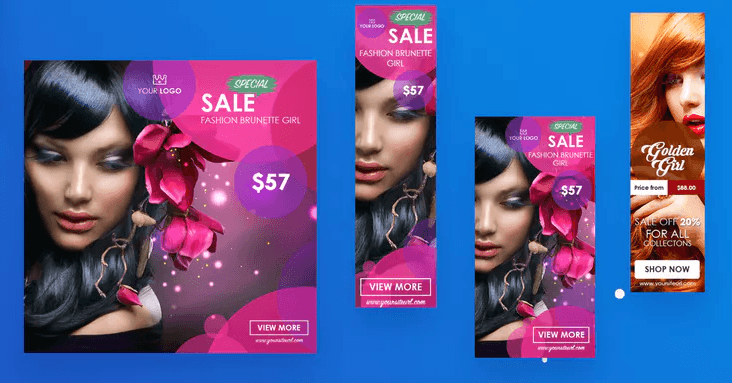
by Traffic Oxygen | Oct 19, 2018 | Display Advertising
Display ads of all colors and sizes are common ornaments of almost all web pages. In fact, odds are you’ve seen several display ads today while browsing the internet…but do you remember them?
If you are part of the overwhelming majority of the population and if the ads you recently viewed were comparable to most display ads, you likely don’t recall the companies or products that were showcased by the ad. In the digital marketing word, there’s a term for this condition and it’s called Banner blindness; a very well known and real trend. Of course, you want to make sure this doesn’t happen with your display advertisements. Read on to learn how to avoid Banner blinding your audience.
Assuming that your goal is to ensure web site visitors are able to see and click through your banners and display ads as opposed to instantly closing or ignoring them, below are the most beneficial steps you can take to turn web viewers into your customers.
1) KISS (Keep It Simple, Stupid)
Of course it may seem like the best way to get the most bang for your advertising buck is to spend the most dollars possible on your ads and put as much on there as you can. However, this isn’t the best plan as marketing data clearly demonstrates that small sized display ads can easily be cluttered with too much content that only serves to confuse the viewer and make the ad more challenging to read and absorb.
Don’t be this person:
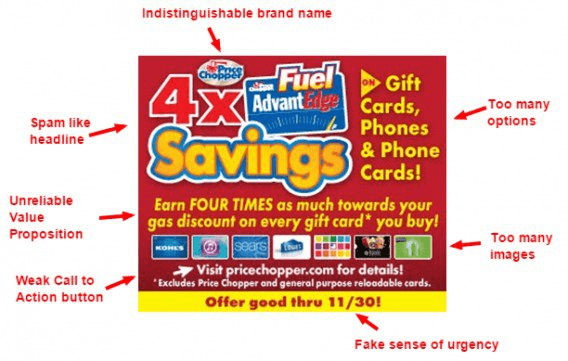 The key to remember here is to make sure your imagery, messages and Call-to- Actions are as straightforward as possible and easy to read and grasp quickly.
The key to remember here is to make sure your imagery, messages and Call-to- Actions are as straightforward as possible and easy to read and grasp quickly.
Although your ad may be minimal and not saying much in terms of quantity, a clean ad design with an effective amount of white space and a defined hierarchy and purpose is the most effective choice.
2) Select High Quality Ad Assets
Although you ad is likely small, don’t take this to mean that you should skimp on investing in quality ad components.
Instead, opt for high-quality illustrations or photographs, depending on your purposes. Use a site like Envanto to gain access to quality images for all your needs.
Go for clearly legible fonts and take special care to have logos that pop and are especially crisp.
Equally important to remember is that your ad should be designed to export at the highest quality it can while still falling within the 150 kb maximum file size for Google Ads. As a final quality tip, always double check your exported images before you upload them.
3) Make it Pop
Your ad should be distinctive enough to stand out to your visitor from the rest of the text and images on the webpage. This concept is not just about making your ad attractive, but rather it gives your ad a better chance of ad network approval.
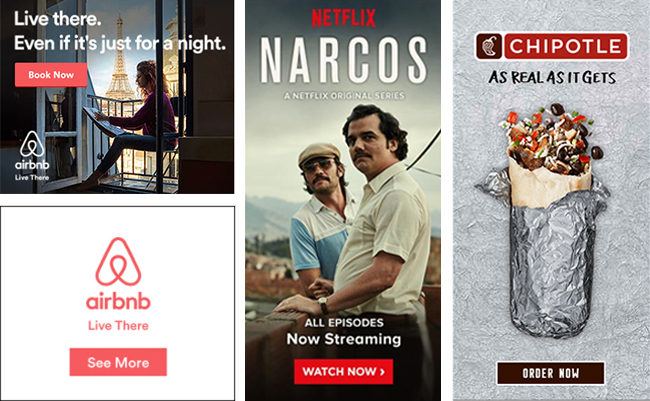
Your border design is significant when it comes to helping your ad pop. Aim for clearly defined borders; you can do this most effectively by placing y. our images and colors on the edge of the ad. This is good practice in regards to ad compliance but also is a great strategy for drawing a visitors eye to your ad. Marketing analysis has proven that our eyes tend to gravitate towards words or images that are in boxes.
4) Relevance Is Key
Marketing goes well when your ad is relevant to the correct audience. That means timing, images, offers and text.
Keep your end user in mind. Keep their experience in mind. You want your ad to appear so seamless, so perfect, they are actually thanking you for showing them an add because it’s perfect for their situation.
5) Keep Branding Uniform
Two items come into play here. One, you always want to keep a similar feel or vibe to your ads. Soft colors vs. bright, fonts used, backgrounds. Now, you don’t want and/or need all your ads to be exactly the same, but you want people to be able to recognize it’s your brand without seeing your logo. They instinctively know it’s you.
Airbnb does a great job at this. The red and green set has the same offer, but slightly different, giving the user a different experience every time they see an Airbnb ad.
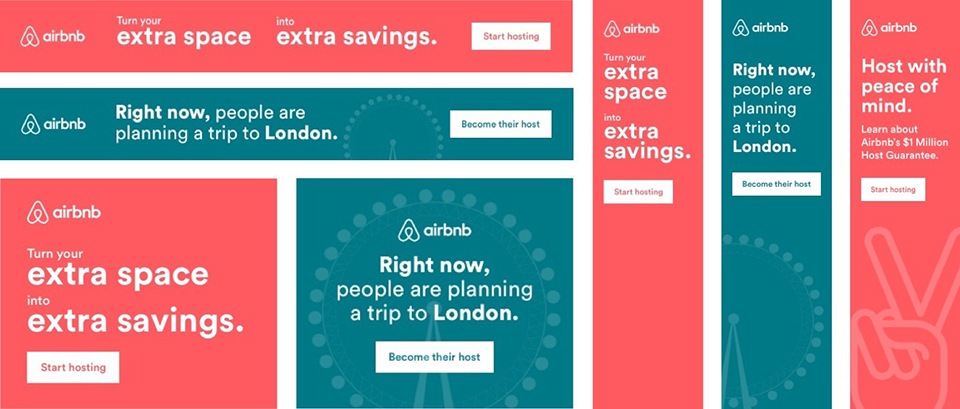
And we can even compare a completely different offer, this one used to bring in new guest rather than host. The branding is similar. For Airbnb, that’s simplistic with their logal being very clear. No matter what, when you see either of these ads, you know it’s Airbnb.
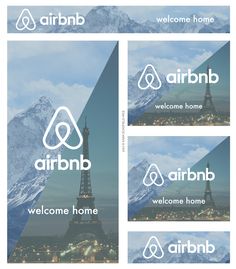 This is critical as our eyes tend to glance over ads after we see them too many times. If the user continues to see similar branding, even if they are only glancing by it to something more important at that given second, you’re priming their mind to recall your brand when the time is right.
This is critical as our eyes tend to glance over ads after we see them too many times. If the user continues to see similar branding, even if they are only glancing by it to something more important at that given second, you’re priming their mind to recall your brand when the time is right.
And two, you also want the ad to have a similar feel to the landing page your user will land on. Nothing is worse than clicking on an ad and going to landing page with completely different colors, products or overall feel. It’s not what the user was expecting and they will leave immediately.
Summary
Now you’re ready to create your ads, get them in front of the right audience and grow your message.
Keep your message simply, think about the user experience and give them something they should thank you for.
Any tips to add based on your experience?
To talk to the writer of this article and project manager, Elliot, about any of your marketing needs, fill out the form below that goes directly to him.

by Traffic Oxygen | Oct 18, 2018 | Retargeting
Every successful business is built on the foundation of strong personal relationships with people who believed in the business owner and in their dream. These relationships form the first customers, employees and partners for your business; it’s important to not take them for granted when they are essentially the legs that you and your company stands on.
By the same token, digital marketing principles are easily compared to building relationships; this allegory can help you gain some insight into how to create your strategy.
Re-engage your customers through smart reminders and stop losing revenue on abandoned shopping carts. Start marketing for $5 a day.
If you’re a small business owner, you may feel intimidated by digital marketing. How can you decide which strategies and platforms will deliver the best results for your business? Designing a clear marketing plan might seem to be an impossible and ever-developing challenge.
However, when you start to think of your potential shoppers more as people in terms of building relationships with them via your marketing budget, the way to connect these users is more clearly illuminated.
In today’s online market, an engaged consumer is expecting to have helpful, relevant and harmonious interactions with your company and landing page. As a business owner you want to be sure and respect the client and the experience they are desiring as well as capturing their attention and channeling it to the right area and action.
Keep in mind that there is an important distinction between generating short-term,
one time product purchases and long-term customer loyalty. A loyal shopper will give glowing recommendations of your company to their colleagues and associates and they’ll purchase from you repeatedly because they trust in your brand and processes.
Did you know that 92-98% of visitors on your website aren’t initially ready to bite the bullet and purchase from you? An intuitive digital marketing plan will include a plan for staying connected and somehow displaying messages to remind these potential customers of your brand and encourage them to find out more about your services and products. Retargeting is key for this purpose.
THE BASICS OF RETARGETING
Here’s an easy example of what retargeting is: at some point you’ve probably visited a website, such as a clothing company, and then noticed advertisements from that same website popping up on your facebook feed or other sites you’re visiting. These adverts are designed to counteract the frustrating abandoned shopping cart phenomenon that many online businesses fear. These ads can also be present a more personalized deal to these potential or future shoppers.
Summary – Relevance is key
Some businesses utilize sophisticated analyses to make their retargeted ads creative as well as highly relevant to the potential client. Relevance is the biggest key to retargeting that yields results. An advertisement can be random and it will have more randomized success, or it can be tailored towards the viewer. You not only want your ad to be relevant but also it should be minimally intrusive to the viewer; statistically, these tactics will generate greater interest from your potential buyer.
Always approach marketing with the end users experience in mind, not what you’re trying to sell them, and you’ll provide a better overall experience for the user, increasing your sales.
To talk to the writer of this article and project manager, Elliot, about any of your marketing needs, fill out the form below that goes directly to him.
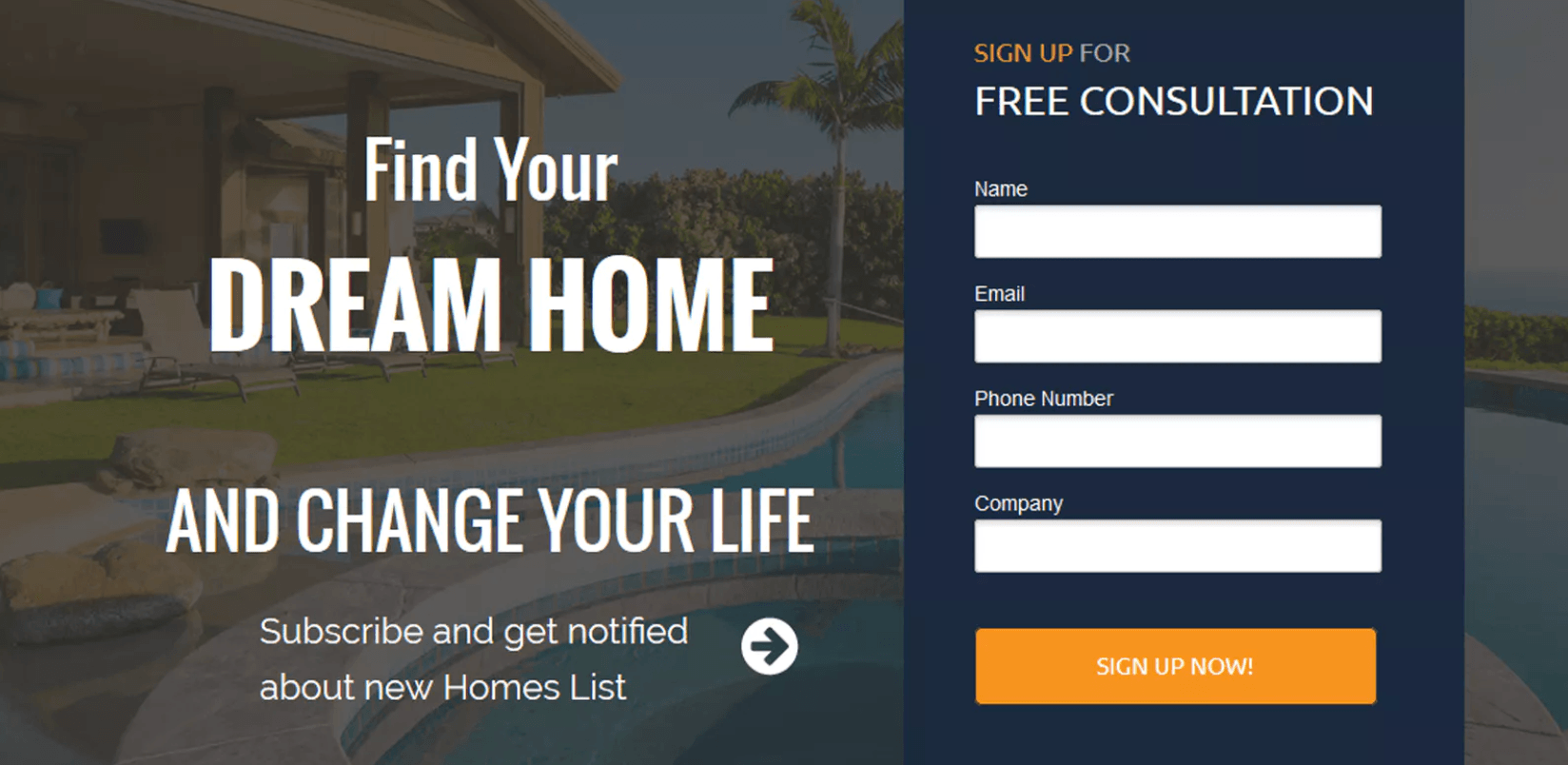
by Traffic Oxygen | Oct 16, 2018 | Display Advertising
Real talk: although it would be nice, not all digital marketers are working with a Coca-Cola sized ad budget. In all my time as a digital marketing professional, I’ve never had a client with exorbitant funds available to drop on target audience and persona research.
Fortunately, for my clients, I come with knowledge and resources, no major study required. Additionally, I have the ability to access quality, free data from Google Analytics– in fact, so can you.
Displaying Google ad campaigns on the Display Network is a common strategy that you can implement to boost brand awareness. In this case, you’ll probably want to direct the web traffic to your landing page; as you select your Call to Action (CTA) for these ads, you’ll want to choose wisely. Your CTA is the first glimpse a web visitor will have of your brand, and first impressions are critical for setting a web user’s expectations of what will come next as they interact with your ad.
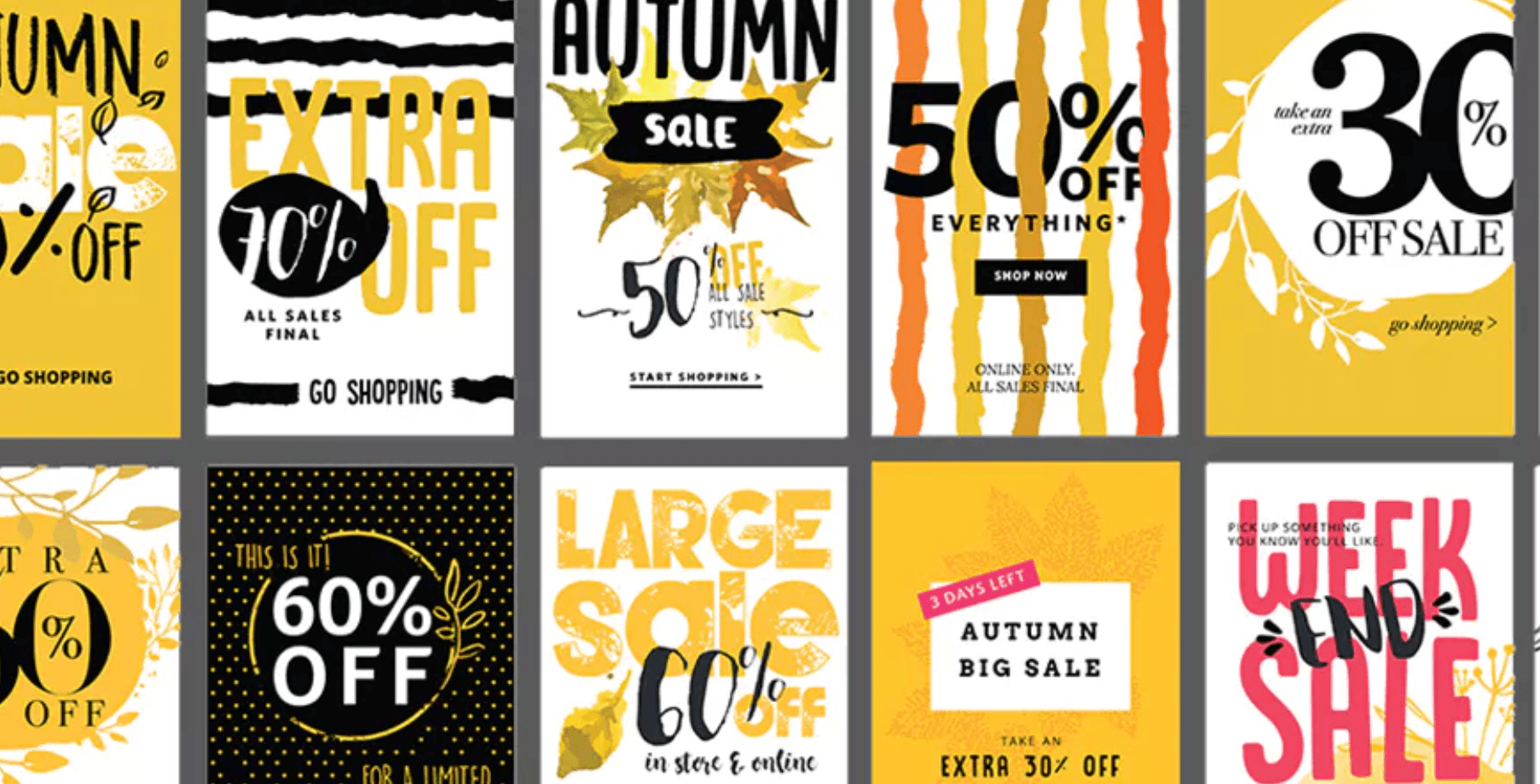
Ad Call To Actions
There are ways to test your Call to Action so you can make sure to pick the right one for your ad; my tips for this are outlined below. The often used “contact us” CTA is a hard sell tactic and may not be the message your prospective customer wants to see right off the bat.
Let’s break down how you can use analytics to explore whether or not you should begin with a softer approach such as “chat with a specialist”, or perhaps “see plans and pricing”. These messages might actually be more appealing to your target audience instead of a CTA that sends the message, “buy now”.
Look Over the History of Actions Taken By Previous Viewers Of Your Landing Pages
If the ultimate link on your display funnel leads to a currently live landing page, look at your data to find out what it is that visitors on your page tend to do once they get to the page. You may already feel you know the ideal CTA for your ad, based solely upon your intent and your current page layout, nonetheless, when it comes to what your visitors actually do on your web page, you might be surprised.
To access your Landing Page information and user history, go to Google Analytics and navigate to the Landing Pages report. Next go to Behavior > Site content > Landing pages. You can see every conversion action taken by your users once you locate your landing page; from here you can determine what action is preferred by the majority of web users on your landing page.
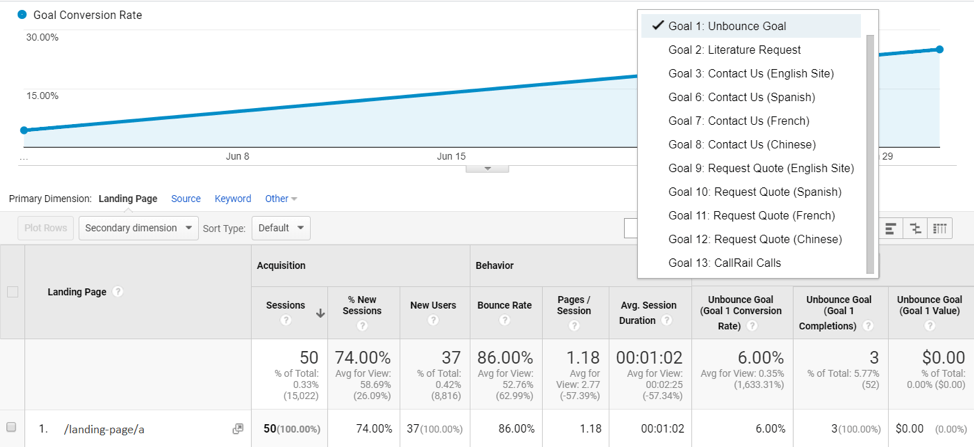
Although Google Analytics is one effective option for finding this information, Google Ads also has a new and helpful interface which allows another option to review your landing page conversions.
If you’re still skeptical about this new interface, you should know that it has a pretty useful feature for displaying your landing page statistics on a group or ad campaign basis as seen below:
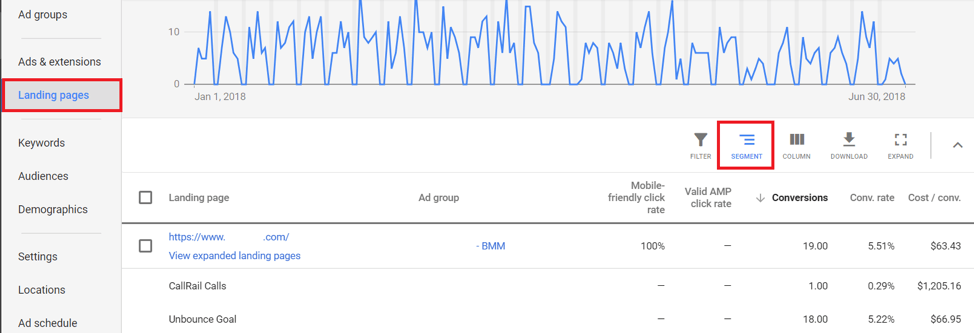
If your landing page offers visitors multiple actions to take, such as filling out a form or calling your company directly, you’ll be able to see this information differentiated on Google Ads so you’ll know which action is more popular with your users.
To talk to the writer of this article and project manager, Elliot, about any of your marketing needs, fill out the form below that goes directly to him.
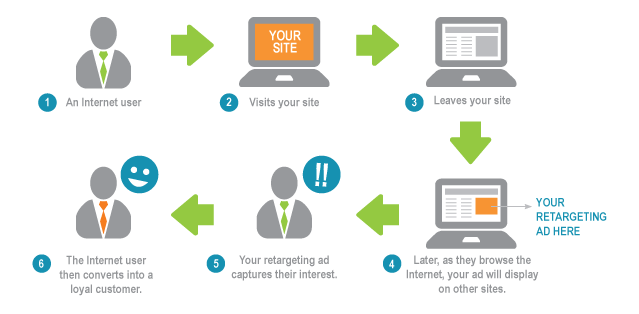
by Traffic Oxygen | Oct 15, 2018 | Retargeting
Statistically, most of your website users are not prepared to purchase your product just yet. However, according to columnist Jacob Baadsgaard, if you implement the right plan of retargeting your customers, you can guide them to that point where not only are they ready to buy but they’re going to purchase your product.
Retargeting is an essential component of modern internet marketing. According to an AdRoll report, last year more than 80 percent of marketers displayed retargeted ads. For anyone familiar with online marketing, this statistic is to be expected.
A common but very frustrating experience for business owners is to review the data and find that people are visiting their website, poking around a little…and then leaving without purchasing any product or filling out a form.
Naturally, the point of retargeting is to display your ad once more in front of a user who has previously shown interest in your company. The goal of your retargeted ad is to actually convert the customer this time so that they complete the desired action.
However, the challenge you need to prepare for is the possibility of frustrating your potential customer with an ill timed, aggressive retargeting ad.
So what’s the solution? How do you encourage a former, inactive landing page visitor to return and make a transaction? The right question to ask here is how to provide your potential buyers with what they’re looking for, when they’re looking for it and in what way can you best display and send this message to your potential clients through your retargeted campaign? Read on for tips you can use to answer these questions and create a successful retargeting strategy.
Retargeting: Are your ad campaigns not converting?
You may already be aware that 92 percent of your website’s first-time visitors aren’t ready to buy. According to some, this number can go as high as 98%.
If you’re like most business owners, this phenomenon is both confusing and frustrating.
You’ve allocated plenty of time and funds towards generating interest in your brand and company and you’ve succeeded in getting web users to click on your ads, but rather than making a purchase (and the logical assumption is that they wish to or else they wouldn’t have clicked on your ad), they up and leave!
You might be thinking that it was a sort of fluke and if you could just show this potential customer some more ads, then they will purchase an item. There’s just one problem with that, though; your ad and landing page didn’t convert them the first time, so why would they work the next time? Here’s a reality check; your hard-earned website traffic is mostly comprised of people who clicked the ad accidentally, were just curious for one reason or another, or found somehow found their way to your site with intentions other than purchasing right that second.
Even on e-commerce sites such as Amazon, 58.6 percent of site visitors report that they abandon their cart because they aren’t ready to buy. The bottom line for you to take away here is that if you use the same exact message to retarget these consumers, this is not going to do anything to help prepare them to purchase from you. Don’t be discouraged, though, all hope is not lost and there actually are ways you can outsmart this issue when it comes to retargeting. Remember that the users who clicked your ad were interested in buying and likely still are- just not quite yet. That’s when you can tailor your retargeting approach and make this the guide that helps them across that bridge so that they are ready and once they get there, you’re the company they want to choose.
To talk to the writer of this article and project manager, Elliot, about any of your marketing needs, fill out the form below that goes directly to him.













